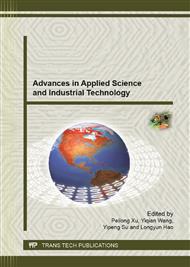[1]
Ming-Dou Ker, Tung-Yang Chen, Layout design to minimize voltage-dependent variation on input capacitance of an analog ESD protection circuit, Journal of Electrostatics 54 (2002), 73-93.
DOI: 10.1016/s0304-3886(01)00154-1
Google Scholar
[2]
Christian Russ, ESD issues in advanced CMOS bulk and FinFET technologies: Processing, protection devices and circuit strategies, Microelectronics Reliability 48 (2008), 1403-1411.
DOI: 10.1016/j.microrel.2008.07.042
Google Scholar
[3]
Yong-Seo Koo, Kwang-Yeob Lee, Joong-Ho Choi, Chan-Ho Lee, Yoon-Sik Lee, Yil-Suk Yang, Electrical characteristics of novel ESD protection devices for I/O and power clamp, IEEE International Symposium on Circuits and Systems (2011), 937-940.
DOI: 10.1109/icm.2010.5696214
Google Scholar
[4]
Peng Zhang, Yuan Wang, Song Jia, Xing Zhang, Analysis of the influence of contact position to the ESD protection ability in GGnmos device, Lecture Notes in Electrical Engineering 134 (2011), 273-278.
DOI: 10.1007/978-3-642-25905-0_36
Google Scholar
[5]
Fei Ma, Yan Han, Bo Song, Shurong Dong, Meng Miao, Jianfeng Zheng, Jian Wu, Kehan Zhu, Substrate-engineered GGNMOS for low trigger voltage ESD in 65nm CMOS process, Microelectronics Reliability 51 (2011), 2124-2128.
DOI: 10.1016/j.microrel.2011.07.028
Google Scholar
[6]
Li Li, Hongxia Liu, Zhaonian Yang, Linlin Chen, A novel co-design and evaluation methodology for ESD protection in RF IC, Microelectronics Reliability 52 (2012), 2632-2639.
DOI: 10.1016/j.microrel.2012.06.003
Google Scholar
[7]
Ming-Dou Ker, Che-Hao Lo, Wen-Yu Chuang, Layout design on multi-finger MOSFET for on-chip ESD protection circuits in a 0. 18-μm salicided CMOS process, 8th IEEE International Conference on Electronics, Circuits and Systems (2001), 361-364.
DOI: 10.1109/icecs.2001.957754
Google Scholar
[8]
Ming-Dou Ker and Jia-Huei Chen, Self-substrate-triggered technique to enhance turn-on uniformity of multi-finger ESD protection devices, IEEE Journal of Solid-State Circuits 41 (2006), 2601-2609.
DOI: 10.1109/jssc.2006.883331
Google Scholar
[9]
François Dieudonné, Aurore Constant, Benoit Gautheron, Jean-François Revel, New method for non destructive snap-back characterization in multi-finger power MOSFETs, IEEE Conference on Microelectronic Test Structures (2008), 137-141.
DOI: 10.1109/icmts.2008.4509328
Google Scholar
[10]
Mingu Kang, Ilgu Yun, Modeling electrical characteristics for multi-finger MOSFETs based on drain voltage variation, Transactions on Electrical and Electronic Materials (2011), 245-248.
DOI: 10.4313/teem.2011.12.6.245
Google Scholar
[11]
Shen-Li Chen and Min-Hua Lee, Layout Strategy of P+ Pick-up on the LV MOST ESD Reliability in 0. 6mm to 0. 18mm CMOS Processes, International Symposium on Next-Generation Electronics (2013), 51-54.
DOI: 10.1109/isne.2013.6512283
Google Scholar
[12]
Shen-Li Chen and Guan-Jhong Chen, Evaluating nMOSFET ESD Protection Designs: An Overview, Journal of Applied Mechanics and Materials 268 (2013), 1357-1360.
DOI: 10.4028/www.scientific.net/amm.268-270.1357
Google Scholar


